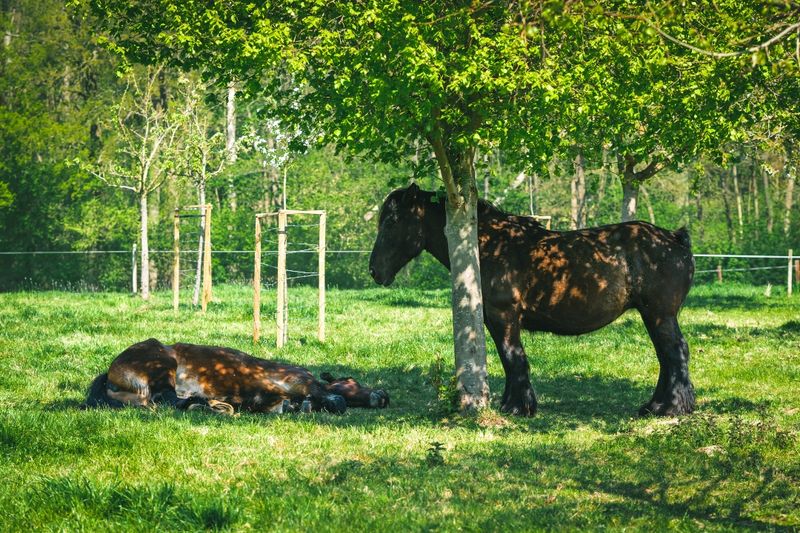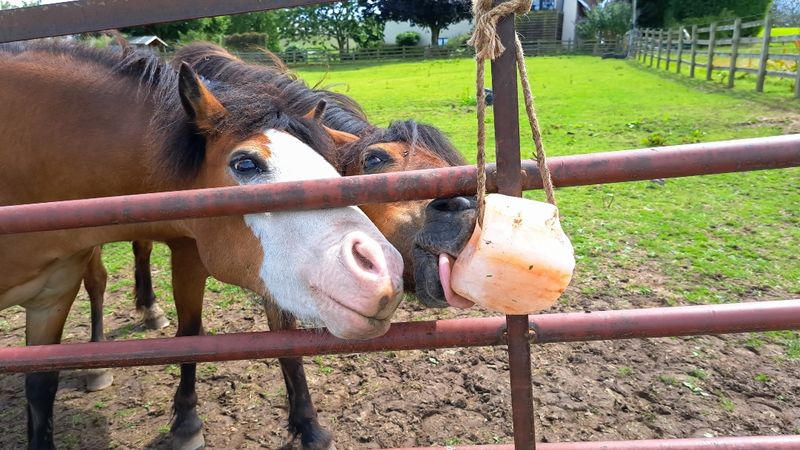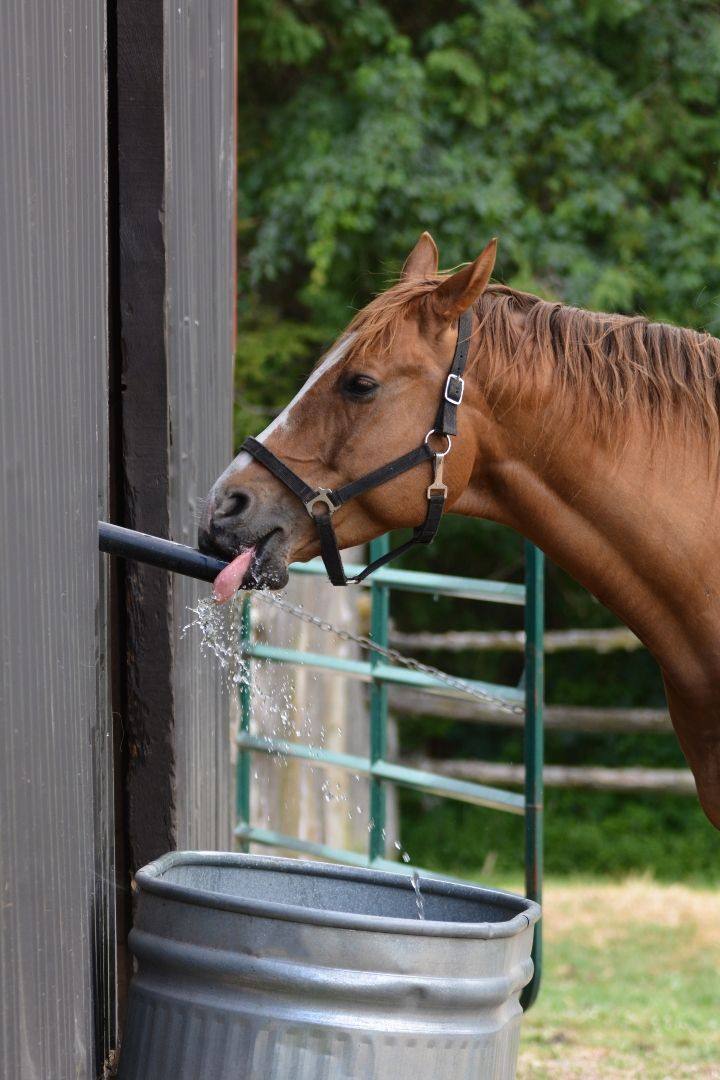Don’t Sweat It — They Will
Help Your Horses Stay Happy, Healthy and Hydrated


It comes as no surprise that horses drink a lot of water; after all, a typical 1,000-pound horse requires 6 to 10 gallons of water per day for optimal health.
But when July rolls around and the heat arrives, it’s even more important to ensure your horse stays hydrated. Here are do’s and don’ts to help keep your horse cool and comfortable this summer.
Do Provide Access to Fresh, Clean Water, Always
An obvious start is to offer 24/7 access to fresh, clean water any time of the year, not just in the summer. But on a warm day, you’d be surprised just how many horses enjoy cool water.
To help encourage hydration, consider emptying and refilling your horse’s water buckets halfway through the day.
Fresh water straight out of the spigot is not only free of debris that might have collected (horses can be messy when they drink), but the temperature of the water will be cooler and more palatable.
Your horse’s water will naturally become “room temperature” over time — so on a hot day this could be very warm water indeed. Try to keep water buckets or tanks in the shade and consider refreshing more frequently in the heat.
Do Always Offer Shade
It always feels nice to get out of the sun on a hot day, and it’s no different for your horse. If he has a shady place to escape to, he’s less likely to become dehydrated.

If you’re starting from scratch, you can situate your pastures to take advantage of existing shade, but this isn’t always an option. Instead, many horse owners utilize three-sided horse shelters — an outdoor stall with one wall missing that your horse can go in and out of as they please.
Shade trees are another option — even a single tree can offer surprising relief from the sun. If you don’t have any in or near your pasture, you can look into planting some fast-growing trees for your region but also be sure to avoid those any that are poisonous to horses such as maple, oak, black walnut, yews, oleander and cherry trees, among others.
Do Change Up Your Schedule
Some horse owners opt to change the turnout schedule for their horses during the hottest summer months.
Rather than turning horses out during the day and stalling them at night, some owners reverse the schedule — bringing them in during the hot daylight hours and turning them out overnight when it’s cooler. This allows horses to enjoy the coolest hours while also sweating less and staying hydrated.
Do Consider Electrolytes
When horses sweat in the heat, they’re losing hydration, but they’re also losing electrolytes, which can also be worrisome.

Sweating is effective because as the moisture evaporates it takes heat with it. But it also causes a loss of minerals like sodium, chloride and potassium — the primary ingredients of electrolytes.
When a horse is electrolyte deficient or imbalanced, it may actually experience decreased thirst, causing an even greater potential for dehydration, not to mention a variety of muscle issues. Any horse can experience a deficiency but working horses or those that are heavily exercised are at a greater risk.
To combat all of this, good feed and free access to a salt block are often basic steps that keep these much needed nutrients balanced (a salt block also encourages hydration). But if a horse is in training and working in warm conditions, it’s wise to discuss electrolyte supplements (paste, liquid and other supplements) with a veterinarian.
Don’t Suddenly Change Water Sources
Horses love routine — especially when it comes to their food and water. In other words, they don’t like change and may actively avoid consuming something that seems different.

Take care if you ever need to change your horse’s water source — if you travel for a trail ride, competition or other horse event, for instance. In those cases, try to haul enough water from home to last not only the travel time, but also so you have enough to temporarily mix your horse’s regular water with the water at the venue.
Don’t Overlook Daily Observation
Paying close attention to your horse is essential year-round, but especially critical during the heat of summer. High temperatures and humidity increase the risk of heat stress or heatstroke, so monitor your horse closely for signs like excessive sweating, rapid breathing and dehydration.
Be sure your horse is drinking regularly and staying cool throughout the hottest parts of the day.
Follow these tips to help keep your horse healthy and properly hydrated during extreme heat.
Tags:Horse Sense

Acreage Life is part of the Catalyst Communications Network publication family.
















